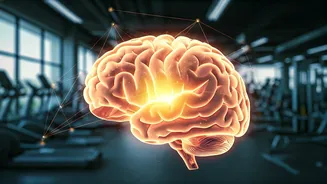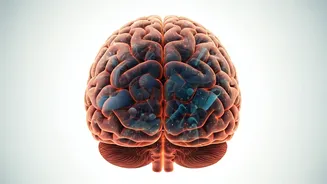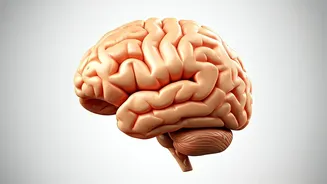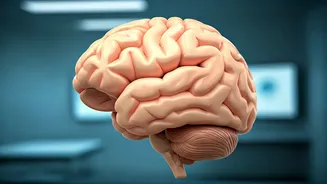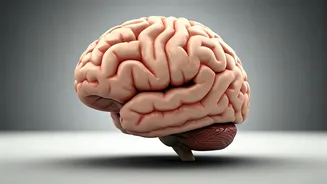Mind-Body Connection
The first section will focus on the fundamental understanding that the brain and body are intimately connected. We will explore how regular physical activity
fosters neuroplasticity, which is the brain's ability to adapt and form new neural connections. The article will provide insights into how exercise may enhance blood flow to the brain, delivering essential oxygen and nutrients that are vital for cognitive function. It will also touch upon the release of endorphins and other neurochemicals that could enhance mood and cognitive performance. Therefore, a holistic approach combining physical and mental exercises is crucial for optimal brain health. Understanding this connection is the first step toward building a robust brain health strategy.
Aerobic Exercise Power
Aerobic exercises, also commonly referred to as cardio, are essential for brain health. This section will elaborate on how activities like brisk walking, jogging, cycling, and swimming enhance cardiovascular fitness, positively influencing brain function. The discussion will include the benefits of these exercises on cognitive processes like memory, attention, and executive function. The article will highlight how engaging in moderate-intensity aerobic exercise for at least 150 minutes per week, or vigorous-intensity exercise for at least 75 minutes per week, can yield significant cognitive benefits. It will also provide examples of specific aerobic routines, such as interval training, to boost efficiency. Additionally, the section will address the importance of consistency in maintaining these routines for long-term brain health and the incorporation of these exercises into a structured plan.
Strength Training Benefits
This section highlights the value of strength training in maintaining brain health, often overlooked in the context of cognitive well-being. The article will explain how lifting weights, using resistance bands, or engaging in bodyweight exercises strengthens muscles and also offers unexpected cognitive advantages. Strength training can improve cognitive function by boosting the levels of brain-derived neurotrophic factor (BDNF), a protein that supports the growth and survival of brain cells. This part emphasizes the recommendation to incorporate strength training at least two days per week, including routines that target major muscle groups. Examples of strength-training exercises, such as squats, lunges, push-ups, and weightlifting, will be offered. The importance of proper form and progressive overload in strength training will also be discussed, with a focus on how this can optimize both physical and cognitive outcomes.
Flexibility and Balance
The significance of flexibility and balance exercises in brain health will be the focus of this section. It will discuss how maintaining good balance helps prevent falls, which can lead to head injuries, a significant risk factor for dementia. Simple exercises like yoga, tai chi, or even regular stretching routines can enhance balance and coordination, thereby reducing the risk of falls and improving overall cognitive function. This part will offer guidance on routines to improve flexibility and balance, encouraging their implementation at least two to three times per week. The article will cover examples of effective balance exercises, like standing on one leg or heel-to-toe walking, and stretching routines that can boost both physical and cognitive wellness. It will also emphasize the significance of integrating these exercises into a broader fitness program to support complete brain health.
Brain-Boosting Activities
This section delves into exercises that directly challenge cognitive function, effectively stimulating and strengthening the brain. Brain-boosting activities are exercises specifically designed to improve memory, focus, and problem-solving skills, and they can be incorporated into daily life. It will explain how activities like crossword puzzles, Sudoku, and learning a new language can strengthen cognitive reserves. The importance of engaging in these exercises regularly to maintain cognitive agility will be discussed. In addition to these, this part will present practical examples such as playing strategic board games and reading. This section will underscore the concept that keeping the brain active and engaged is essential for maintaining cognitive health and minimizing the risk of cognitive decline as one ages. Furthermore, it will encourage the incorporation of these mental exercises into a holistic fitness plan.
Creating a Routine
This section offers practical advice on integrating all the previously described exercise routines into a manageable and effective plan. This section will guide readers on how to develop a weekly exercise schedule, combining aerobic, strength training, flexibility, balance exercises, and brain-boosting activities for comprehensive brain health. It will highlight the importance of starting slowly and progressively increasing the intensity and duration of exercises to avoid injury and encourage adherence. Readers will also find tips on setting realistic goals and tracking their progress, with the encouragement to consult healthcare professionals or certified trainers for customized plans. The section will provide suggestions for making exercise a regular habit and integrating fitness into a busy lifestyle. Furthermore, it will emphasize the necessity of consistency in seeing long-term benefits in cognitive function and overall well-being.
